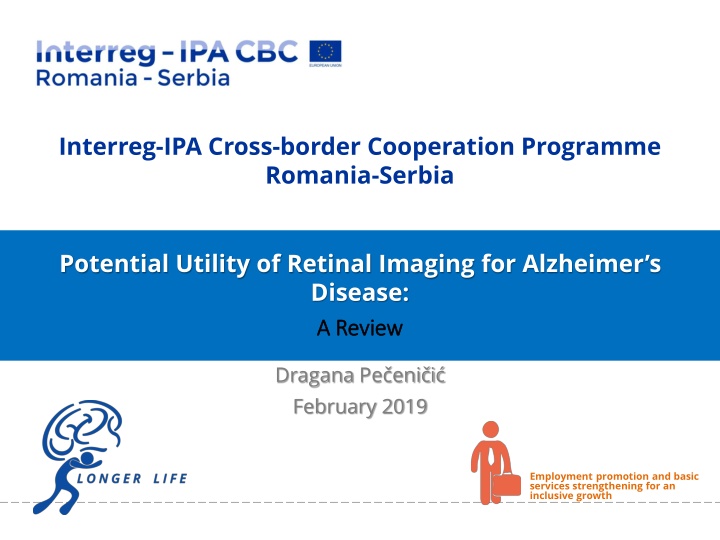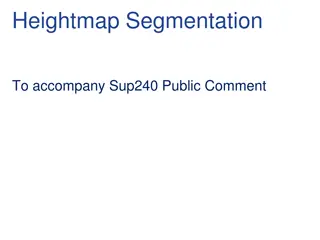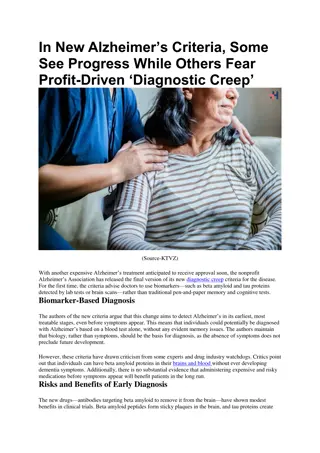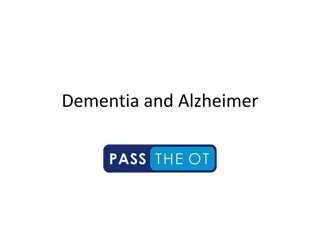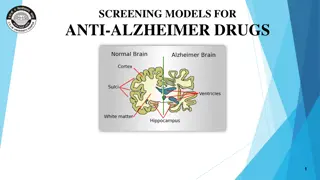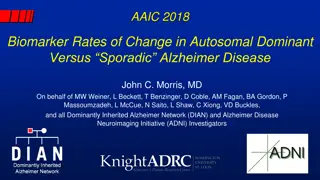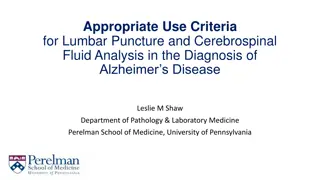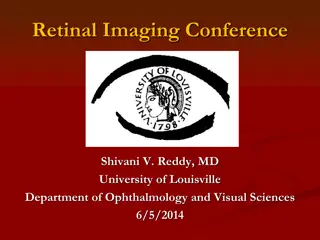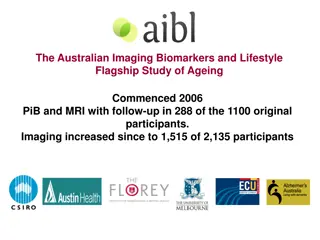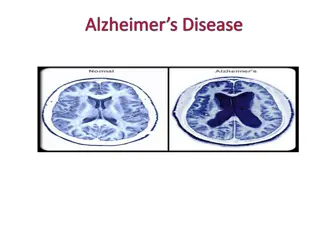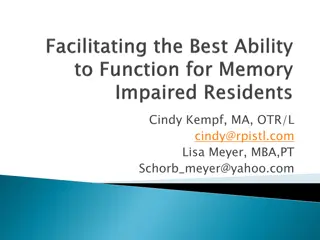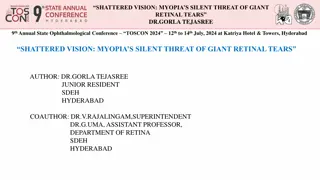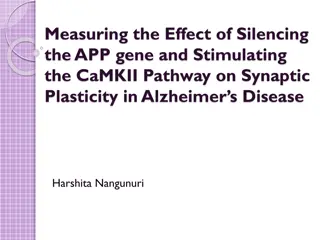Retinal Imaging for Alzheimer's Disease: A Comprehensive Review
The increasing prevalence of Alzheimer's disease (AD) necessitates sensitive screening technologies for early detection. Retinal imaging emerges as a promising tool due to its non-invasive nature, cost-effectiveness, and potential as a window to the brain. This review explores the utility of retinal imaging for AD detection, highlighting its role in early diagnosis, monitoring disease progression, and facilitating clinical trials.
Download Presentation

Please find below an Image/Link to download the presentation.
The content on the website is provided AS IS for your information and personal use only. It may not be sold, licensed, or shared on other websites without obtaining consent from the author.If you encounter any issues during the download, it is possible that the publisher has removed the file from their server.
You are allowed to download the files provided on this website for personal or commercial use, subject to the condition that they are used lawfully. All files are the property of their respective owners.
The content on the website is provided AS IS for your information and personal use only. It may not be sold, licensed, or shared on other websites without obtaining consent from the author.
E N D
Presentation Transcript
Interreg-IPA Cross-border Cooperation Programme Romania-Serbia Potential Utility of Retinal Imaging for Alzheimer s Disease: A Review A Review Dragana Pe eni i February 2019 Employment promotion and basic services strengthening for an inclusive growth
Potential Utility of Retinal Imaging for Alzheimer s Disease The ensuing upward shift in demographic distribution due to the increase in life expectancy has resulted in a rising prevalence of Alzheimer s disease (AD). The heavy public burden of AD, along with the urgent to prevent and treat the disease before the irreversible damage to the brain, calls for a sensitive and specific screening technology to identify high-risk individuals before cognitive symptoms arise. Even though current modalities, such as positron emission tomography (PET) and cerebrospinal fluid (CSF) biomarker, showed their potential clinical uses in early detection of AD, the high cost, narrow isotope availability of PET probes and invasive characteristics of CSF biomarker limited their broad utility.
WINDOW TO THE BRAIN Therefore, additional tools for detection of AD are needed. As a projection of the CNS, the retina has been described as a window to the brain and a novel marker for AD. Low cost, easy accessibility and non-invasive features make retina tests suitable for large-scale population screening and investigations of preclinical AD.
The Retina A Window to AD As an extension of the CNS, the retina and optic nerve share many features in terms of embryological origin, anatomy, response to injury, immunology and physiological characteristics, with the brain . Similar to all fiber tracts of CNS, the optic nerve is myelinated as they leave the eyes. Insult to the optic nerve leads to degeneration of the axons, myelin damage and inducing a neurotoxic condition, which are also observed in other CNS axons Retinal Changes and AD Given these strong connections between the brain and the retina, it has been indicated that neurodegenerative disease, such as AD, may also lead to similar pathology in RGCs and optic nerve.
Imaging Retina to Study AD The visualization of detailed structure and functions of the retina has dramatically improved with the development of modern imaging techniques. This has provided clinicians and researchers with valuable tools for potential early diagnosis and differentiation, monitoring progression, and clinical drug trials of AD.
Structural Imaging Methods 1. Ocular Fundus or Retinal Photography is the classic imaging technique for investigating the retina, providing routine retinal checks in eye clinics. Ocular fundus or retinal photography is able to detect types of retinal vascular signs. 2. Optical Coherence Tomography (OCT), a non-invasive technique providing high-resolution imaging of retina. 3. Confocal Scanning Laser Ophthalmoscopy (cSLO) is an imaging technique and allows for reconstructing three- dimensional structures 4. Detection of Apoptotic Retinal Cells (DARC) is believed to be used as a valuable tool in early diagnosis and treatment assessment for AD.
Functional Imaging Methods 1. Pattern Electroretinogram (PERG) allows to objectively assess ganglion cells and their axons electrical response to patterned stimuli. 2. Retinal oximetry is a spectrophotometric fundus imaging to measure oxygen saturation in retinal blood vessels in a non- invasive, fast and safe manner. 3. Doppler OCT 4. Retinal Microperimetry.
Conclusion Structural and functional retinal changes have been suggested as the window to the neurodegenerative diseases. Retinal imaging is a non-invasive, cost-effective and highly promising method to study AD and provides new and additional important insights into AD. Future studies investigating underlying mechanisms between retinal changes and AD and the utility of combining retinal imaging technologies with neurological examinations are needed before retina imaging can be translated as a useful tool in clinical practice. Understanding neurodegeneration in the retina may provide not only a clearer picture of brain disorders onset and progression, but also promising non- invasive tools for large-scale screening and monitoring brain diseases.
